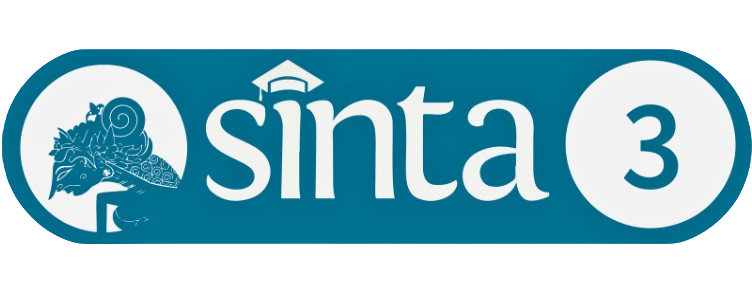Flourishing Pasien Hipertensi: Adakah Peranan Relasi Sosial di Dalamnya?
Unduhan
Penyakit hipertensi menjadi Penyakit Tidak Menular (PTM) kelima yang menjadi masalah kesehatan utama di Indonesia. Penelitian ini menginvestigasi hubungan antara dukungan relasi sosial dengan flourishing pada individu dengan penyakit hipertensi. Penelitian ini menggunakan metode cross-sectional yang melibatkan 109 partisipan dengan hipertensi di Klinik Pratama Polres Kota Pasuruan. Tingkat flourishing diukur dengan menggunakan skala Flourishing Index dan relasi sosial diukur menggunakan NIH Toolbox Adult Social Relationship. Hasil penelitian menunjukkan ada hubungan positif antara relasi sosial dengan flourishing individu dengan hipertensi (r = 0,437, p < 0,01), yang menandakan semakin baik relasi sosial individu maka semakin baik pula flourishing individu.
Ardiansyah, M. (2012). Keperawatan Medikal Bedah. Diva Press.
Azwar, S. (2007). Metode Penelitian. Pustaka Pelajar.
Cyranowski, J. M., Zill, N., Bode, R., Butt, Z., Kelly, M. A. R., Pilkonis, P. A., Salsman, J. M., & Cella, D. (2013). Assessing social support, Companionship, And distress: National institute of health (NIH) toolbox adult social relationship scales. Health Psychology, 32(3), 293–301. https://doi.org/10.1037/a0028586
Donaldson, T. (2024). Human flourishing, the goals of medicine and integration of palliative care considerations into intensive care decision-making. Journal of Medical Ethics, 50(8), 539-543. https://doi.org/10.1136/jme-2023-109299
Edgar, A., & Pattison, S. (2016). Flourishing in Health Care. Health Care Analysis, 24(2), 161–173. https://doi.org/10.1007/s10728-016-0315-5
Engel, G. L. (1977). The need for a new medical model: A Challenge for Biomedicine. Science, 196(4286), 129-136. https://doi.org/10.1126/science.847460
Hadi, S. (2000). Metodologi Research. Fakultas Psikologi UGM.
Huppert, F. A., & So, T. T. C. (2009). What percentage of people in Europe are flourishing and what characterises them? Briefing document for the OECD/ISQOLS meeting “Measuring subjective well-being: an opportunity for NSOs?”. Well-Being Institute, University of Cambrigde.
Janicki-Deverts, D., Cohen, (2011) Social ties and resilience in chronic disease. In Southwick, S. M., Litz, B. T., Charney, D., & Friedman, M. J. (Eds), Resilience and mental health: Challenges across the lifespan (pp. 76-69). Cambridge University Press.
Kang, H. (2021). Sample size determination and power analysis using the G* Power software. Journal of educational evaluation for health professions, 18, 17. https://doi.org/10.3352/jeehp.2021.18.17
Karademas, E. C., Dimitraki, G., Papastefanakis, E., Ktistaki, G., Repa, A., Gergianaki, I., Bertsias, G., Sidiropoulos, P., Mastorodemos, V., & Simos, P. (2020). Emotion regulation contributes to the well-being of patients with autoimmune diseases through illness-related emotions: A prospective study. Journal of Health Psychology, 25(13-14), 2096-2105. https://doi.org/10.1177/1359105318787010
Kern, M. L., Waters, L., Adler, A., & White, M. (2014). Assessing employee wellbeing in schools using a multifaceted approach: Associations with physical health, life satisfaction, and professional thriving. Psychology, 5(6), 500-513. http://doi.org/10.4236/psych.2014.56060
Kemenkes. (2018). Riset Kesehatan Dasar. Badan Kebijakan Pembangunan Kesehatan
Keyes, C. L. M. (2005). Mental illness and/or mental health? Investigating axioms of the complete state model of health. Journal of Consulting and Clinical Psychology, 73(3), 539–548. https://doi.org/10.1037/0022-006X.73.3.539
Keyes, C. L. M. (2007). Promoting and Protecting Mental Health as Flourishing: A Complementary Strategy for Improving National Mental Health. American Psychologist, 62(2), 95–108. https://doi.org/10.1037/0003-066X.62.2.95
Lazarus, R. S., & Folkman, S. (1986). Cognitive theories of stress and the issue of circularity. Dalam M. H. Appley & R. Trumbull (Eds.), Dynamics of Stress (hal. 63–80). Springer US. https://doi.org/10.1007/978-1-4684-5122-1_4
Rahe, M., & Jansen, P. (2023a). A closer look at the relationships between aspects of connectedness and flourishing. Frontiers in Psychology, 14. https://doi.org/10.3389/fpsyg.2023.1137752
Sarafino, E. P., & Timothy W. Smith. (2011). Health Psychology: Biopsychosocial Interactions (7th ed.). Wiley.
Schmidt-Sane, M., Cele, L., Bosire, E. N., Tsai, A. C., & Mendenhall, E. (2023). Flourishing with chronic illness(es) and everyday stress: Experiences from Soweto, South Africa. Wellbeing, Space and Society, 4, 100144. https://doi.org/10.1016/j.wss.2023.100144
Seligman, M. E. P. (2011). Flourish. Random House Australia.
Shdaifat, E., Alshowkan, A., Omer, A., Alqahtani, F., AL‐Qahtani, M., Alsaleh, N., Kamel, N., & Alotaibi, N. (2024). Flourishing among undergraduate nursing students: Insights from a cross‐sectional study in Saudi Arabia. Nursing Open, 11(3), e2119. https://doi.org/10.1002/nop2.2119
Spruill, T. M. (2010). Chronic psychosocial stress and hypertension. Current Hypertension Reports, 12(1), 10-16. https://doi.org/10.1007/s11906-009-0084-8
Sugiyono. (2022). Metode Penelitian Kuantitatif. Alfabeta.
Trompetter, H. R., Mols, F., & Westerhof, G. J. (2019). Beyond Adaptive Mental Functioning with Pain as the Absence of Psychopathology: Prevalence and Correlates of Flourishing in Two Chronic Pain Samples. Frontiers in Psychology, 10, 2443. https://doi.org/10.3389/fpsyg.2019.02443
VanderWeele, T. J. (2017). On the promotion of human flourishing. Proceedings of the National Academy of Sciences of the United States of America, 114(31). https://doi.org/10.1073/pnas.1702996114
Vieth, A. Z., Hagglund, K. J., Clay, D. L., Frank, R. G., Thayer J.F, Johnson, J. C., & Goldstein, D. E. (1997). The contribution of hope and affectivity to diabetes-related disability. An exploratory Studi. Journal of Clinical Psychology in Medical Setting, 4, 65–77. https://doi.org/10.1023/A:1026284104493
Vidal, C., Silverman, J., Petrillo, E. K., & Lilly, F. R. W. (2022). The health promoting effects of social flourishing in young adults: A broad view on the relevance of social relationships. The Social Science Journal, 59(2), 221–235. https://doi.org/10.1016/j.soscij.2019.08.008
Walker, J., Lovett, R., Kukutai, T., Jones, C., & Henry, D. (2017). Indigenous health data and the path to healing. The Lancet, 390(10107), 2022–2023. https://doi.org/10.1016/S0140-6736(17)32755-1
Widana, W. & Muliani, P., L. (2020). Uji Prasyarat Analisis. Klik Media.
World Health Organization. (2017). Hipertensi. https://www.who.int/news-room/fact-sheets/detail/hypertension
Hak Cipta (c) 2025 Okik Yoga Pratama, Amherstia Pasca Rina, IGAA Noviekayati, SRK Syaharani

Artikel ini berlisensi Creative Commons Attribution 4.0 International License.
BRPKM adalah terbitan berkala dengan akses terbuka Creative Commons Attribution 4.0 International (CC-BY 4.0) sehingga hak cipta tetap berada di tangan penulis.
Dengan lisensi ini, siapapun berhak menggunakan informasi dan melakukan re-distribusi konten yang dimuat dalam jurnal ini untuk kepentingan apapun, termasuk kepentingan komersial. Hal tersebut dapat dilakukan selama memenuhi dua kondisi, yaitu; (1) anda harus memberikan atribusi dengan mengutip sumber tautan aslinya, dan menyatakan apabila ada perubahan yang dilakukan; dan (2) anda tidak dapat menggunakan ketentuan hukum atau sarana kontrol teknologi yang secara hukum dapat membatasi orang lain untuk melakukan hal-hal yang diizinkan oleh lisensi ini.
Redaksi jurnal tidak akan meminta penulis untuk melakukan persetujuan transfer hak cipta atas semua naskah yang diterbitkan.










